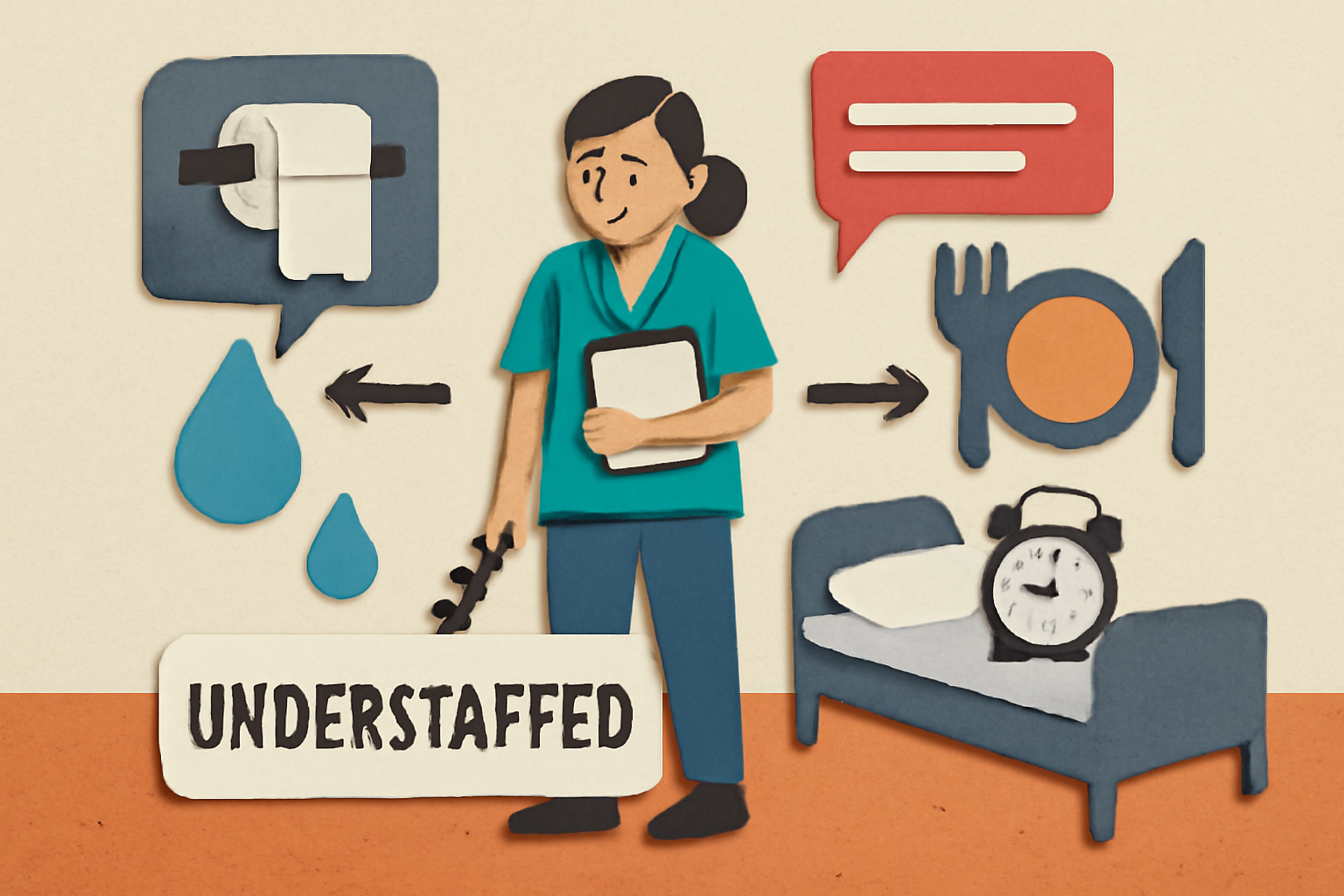
Care workers across various settings, such as hospitals, long-term care facilities, and private homes, face numerous challenges, one of which is the insufficient time and opportunities to take bathroom breaks during long shifts. This situation, often termed the "bladder tax," underscores the difficult working conditions and the urgent need for systemic changes.
Understanding the "Bladder Tax"
The term "bladder tax" refers to the implicit penalty care workers face when they are unable to take necessary breaks due to the demanding nature of their jobs. In environments where care workers are required to attend to patients or residents continuously, the chance for personal respite can be minimal. This becomes particularly problematic during twelve-hour shifts, where physical endurance and personal well-being are critically tested.
Factors Contributing to Insufficient Breaks
High Patient-to-Caregiver Ratios: One of the primary contributors to this issue is the high patient-to-caregiver ratio. With more patients to attend to than is feasible for the number of staff, care workers find themselves overwhelmed and unable to step away for even the most basic needs.
Staff Shortages: Chronic understaffing means that when a worker takes a break, their duties remain undone until their return, adding pressure to "hold it" until another suitable time arises.
Cultural and Institutional Norms: Some workplaces may have ingrained cultures where taking breaks is implicitly discouraged, further exacerbating the problem. Workers may fear reprimand or judgment for stepping away from their duties.
Time Management Pressures: Care workers often have tightly packed schedules. Any deviation, including taking a needed break, might lead to falling behind on critical patient care tasks.
Health Implications
The inability to take bathroom breaks does not just lead to discomfort; it poses serious health risks. Holding urine for extended periods can increase the risk of urinary tract infections (UTIs), kidney damage, and other health complications. This practice deteriorates worker health and reduces their ability to provide effective care.
Solutions and Advocacy
1. Staffing Adjustments: Addressing understaffing through hiring campaigns and better workforce management can help alleviate the burden. Adequate staffing ensures tasks can continue seamlessly when workers need breaks.
2. Policy and Culture Change: Leadership within care facilities should prioritize creating a supportive culture where staff feel empowered to take necessary breaks without fear of repercussions.
3. Scheduling Reforms: Implementing structured and equitable shift patterns and including designated break times in daily schedules can help ensure that all workers have guaranteed personal time.
4. Worker Advocacy: Encouraging care workers to advocate for their rights, join unions, and engage in dialogue with management can lead to significant improvements in their working conditions.
Conclusion
The issue of the "bladder tax" highlights the pressing need for reform in how care workers are treated and supported within their workplaces. By addressing these challenges through strategic changes in staffing, policy, and culture, the well-being of care workers can be improved, leading to better care outcomes for patients and a healthier workforce.